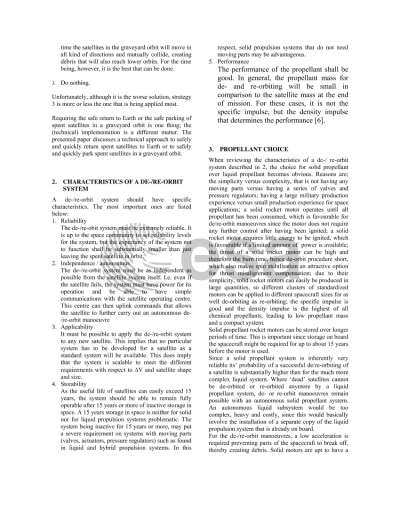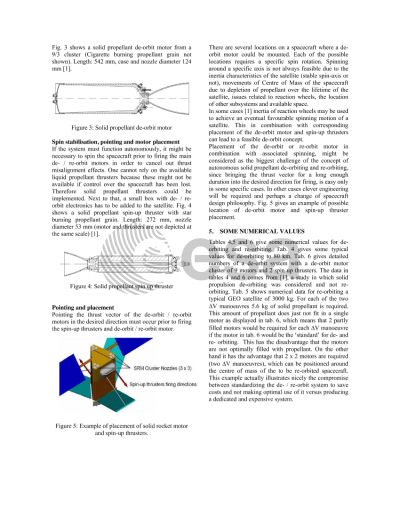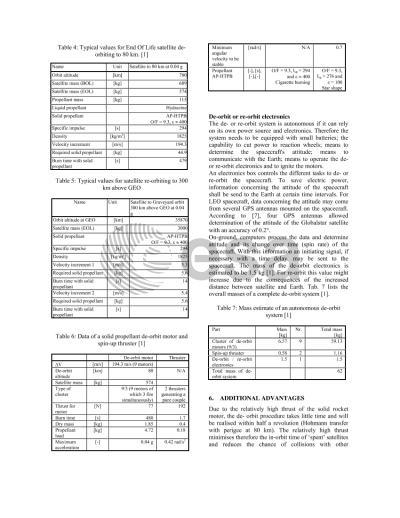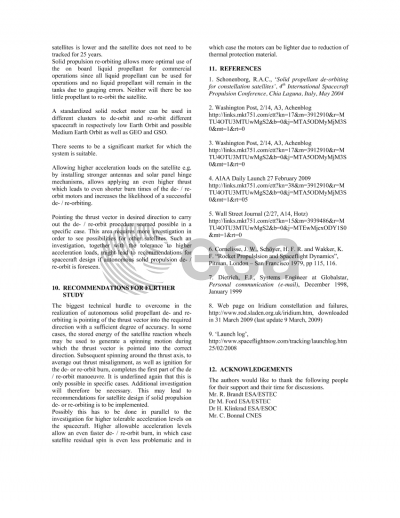Document details

Abstract
With many "innovative" de-orbit systems (e.g. tethers, aero breaking, etc.) and with natural de-orbit, the place of impact of unburned spacecraft debris on Earth can not be determined accurately. The idea that satellites burn up completely upon re-entry is a common misunderstanding. To the best of our knowledge only rocket motors are capable of delivering an impulse that is high enough, to conduct a de-orbit procedure swiftly, hence to de-orbit at a specific moment that allows to predict the impact point of unburned spacecraft debris accurately in remote areas. In addition, swift de-orbiting will reduce the on-orbit time of the 'dead' satellite, which reduces the chance of the dead satellite being hit by other dead or active satellites, while spiralling down to Earth during a slow, 25 year, or more, natural de-orbit process. Furthermore the reduced on-orbit time reduces the chance that spacecraft batteries, propellant tanks or other components blow up and also reduces the time that the object requires tracking from Earth.The use of solid propellant for the de-orbiting of spacecraft is feasible. The main advantages of a solid propellant based system are the relatively high thrust and the facts that the system can be made autonomous quite easily and that the system can be very reliable. The latter is especially desirable when one wants to de-orbit old or 'dead' satellites that might not be able to rely anymore on their primary systems. The disadvantage however, is the addition of an extra system to the spacecraft as well as a (small) mass penalty. [1]This paper describes the above mentioned system and shows as well, why such a system can also be used to re-orbit spacecraft in GEO, at the end of their life to a graveyard orbit.Additionally the system is theoretically compared to an existing system, of which performance data is available.A swift market analysis is performed as well.
Preview









